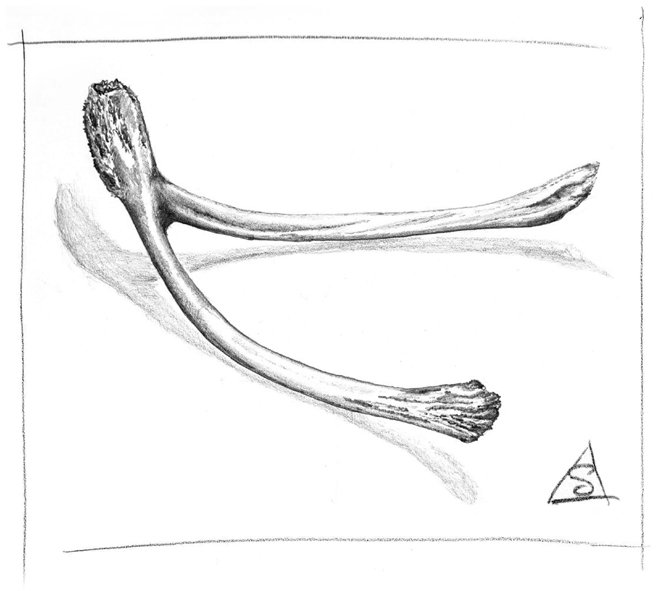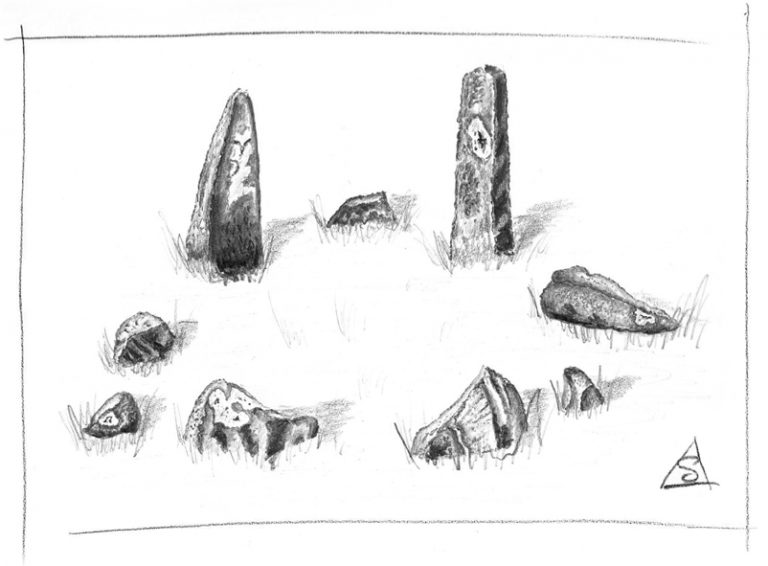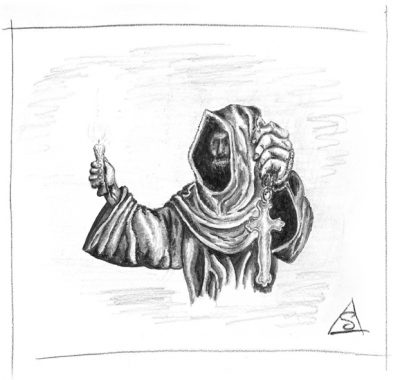
A little more about REMAINS
Author's Notes & Featured Creatures
TRIBUTES
To everyone working in the field of natural history, dinosaur research, historical research and archaeology, I once again send a massive thank you for your constant inspiration.
As always, a few liberties have been taken…
ABOUT THE CREATURES & THEIR ORIGINS
Once again, I have included several dinosaurs within this book (shocker, I know), many of which I discussed briefly in previous notes. Like Carcharodontosaurus saharicus and the famous Spinosaurus aegyptiacus, some of them were also discovered by Ernst Stromer during his time in Egypt. I mentioned one of them in the notes at the back of the last book, another large theropod predator named Bahariasaurus ingens.
The Allied bombing of the Old Academy, Munich, during spring 1944, destroyed Stromer’s finds, along with the type specimen for Bahariasaurus. It is still unclear exactly which theropod family this animal belonged to. However, we can estimate that it grew to perhaps 12m in length and would have been a much lighter animal than Carcharodontosaurus saharicus, perhaps half the weight by similar length, and this fuels the imagination. How fast was it? How did it hunt?
While we wait for the science to catch up on these questions, I’ll look forward to writing more about Bahariasaurus ingens in the next book, CURSED.

The pack of Rugops primus, about to spring their trap on Devon, Aito and Jansen, were also mentioned in my notes for REROUTE, however, I’m not sure Sarcosuchus imperator got the paper and ink it deserved. Of the same family as the giant crocodile featured in some of the earlier books, Sarcosuchus imperator was one of the largest crocodiles known to science. With each jaw measuring at least 2m, it really did have a maw a grown man could walk into – if he’d really had enough!
Deltadromeus agilis was (possibly) yet another huge and terrifying theropod carnivore from North Africa. I add the ‘possibly’ only because some palaeontologists think the remains of this animal may actually have been a smaller Bahariasaurus. It seems entirely likely and believable that animals sharing a time and place might show similarities, even share ancestry, but as diggers are yet to find a head for either, the argument remains unresolved. For myself, Deltadromeus agilis was an irresistible force – an animal possibly the size of Allosaurus, but built more like a raptor – come on!
However, my personal exuberance aside, the hapless Ouranosaurus nigeriensis that crossed paths with Deltadromeus in the story, were understandably less enthusiastic. Ouranosaurus nigeriensis was a hadrosauriform, related to both the famous Iguanodon bernissartensis and the duck-billed dinosaurs. Despite being herbivorous, the row of neural spines along much of the ouranosaurs’ backs and tails created ‘sails’ similar in appearance to those of several of the predatory spinosaur family.
NAMES & ITALICS
Just a couple of editorial notes as I think of them: I stated previously about opting not to italicise the animal names in the main body of the story, hoping to avoid any confusing emphasis. Keeping all the capital letters in check is quite a job, too, as it happens – Tyrannosaurus vs. tyrannosaurs – see what I mean? (At this point, it would be remiss of me not to mention how hard my editor works to keep righting my wrong writing! Thank you.)
While on the subject of wrongs… in chapter 10, Video Nasty, Aito says, “The public records of everyone on this mission aren’t worth a damn.” This is such a common expression that I spelt damn after the original four-letter word. However, it is believed that the derivation actually comes from a small Indian coin called a ‘dam’ – I assume they weren’t worth very much. The phrase was possibly carried back to England by soldiers in the mid-18th century. ‘I don’t give a damn’ was an Americanism first recorded in the 1890s. Correcting this typo in the story made it look like a typo, ironically – so it was just a case of, ahem, damned if you do, damned if you don’t! (Sorry.) Mucking around with words leads us inevitably to Shakespeare.
As with REROUTE, I have once again tried to include a flavour of the Elizabethan era dialects, hopefully without the confusion. In reality, it’s fair to say that they would have been far more impenetrable to most of us moderners, as we would no doubt be to them.  Can you imagine what they would make of emojis? Use of such glyphs would surely have been worthy of a burning at the very least! I remember one far-off day in English literature class, when the fourteen-year-old Stephen took his turn in reading Shakespeare to the class, including line numbers and all! I stopped reading when the rest of the class fell about laughing. I was completely baffled by this, until the teacher explained what I’d done. She was familiar with the condition where people walk in their sleep, but reading in one’s sleep was apparently all new to her! Unfortunately, that is all I recall about my introduction to the Bard. I’m sorry to admit that is a true story. I may also have poked a little fun at one of literature’s most important figures here, but most fourteen-year-olds probably feel the same. In any case, his reputation will far outlive my own, so he can get over himself! Here, have a smiley face, Shakey :o)
Can you imagine what they would make of emojis? Use of such glyphs would surely have been worthy of a burning at the very least! I remember one far-off day in English literature class, when the fourteen-year-old Stephen took his turn in reading Shakespeare to the class, including line numbers and all! I stopped reading when the rest of the class fell about laughing. I was completely baffled by this, until the teacher explained what I’d done. She was familiar with the condition where people walk in their sleep, but reading in one’s sleep was apparently all new to her! Unfortunately, that is all I recall about my introduction to the Bard. I’m sorry to admit that is a true story. I may also have poked a little fun at one of literature’s most important figures here, but most fourteen-year-olds probably feel the same. In any case, his reputation will far outlive my own, so he can get over himself! Here, have a smiley face, Shakey :o)
LEGENDS & LIBERTIES
For anyone interested in the story of Sir William de Soulis, legend has it that he was bound by specially crafted chains and taken off to Ninestane Rig, where he was wrapped in lead and boiled alive by the people under his ‘care’. The reason given for the chains was that his magic was so strong he could neither be bound by ropes nor cut by steel. The history tells it rather differently. As I mentioned in the last book, he was already long dead by Tudor times, but was such a beautifully crafted, semi-real villain, I just couldn’t resist! Anyone who has ever visited Hermitage Castle in the Scottish Borders will understand; such a dark, menacing place simply had to have an evil, black-magic-wielding lord in its past. Fleetingly back to the history, Sir William actually died in the dungeons of Dumbarton Castle. 
It seems to have been common policy for the border lords of the time to consider whether their interests were best served by affiliation with the English or the Scots. In AD1320, it is believed that Sir William de Soulis (also spelt de Soules) was party to an English plot to kill Robert the Bruce, the Scots King. The scheme failed and he was rounded up with the other (presumably) guilty parties and taken to Dumbarton Castle where he died but, as far I can tell from the information available, was not executed. Dungeons were, after all, very unhealthy places to be, so this is probably not all that surprising. The legend that has stuck to him seems to come from a cross-pollination between Sir William’s own black reputation (even by medieval standards, he was a seriously bad man) and the sticky end suffered by his ancestor, Sir Ranulf de Soulis (or possibly Randolph), who was murdered by his servants in AD1207. The legend of De Soulis and his familiar, Robin Redcap, fit so perfectly into the Hermitage Castle story that I intend to write about them further, once the New World Series is complete.
I probably should have mentioned this in my notes at the end of the last book: Lord David Maxwell is a fictional character I invented to bring together the New World’s crew and the indigenous Scots. The Maxwell clan was real enough, however, although I believe they were still followers of the Catholic faith at the time when this story was set. They really didn’t get along with the Johnstones. Also around this time, the title of Lord Maxwell changed hands very quickly as several of the incumbents died in rapid succession. By 1558 it was the turn of John, the 8th Lord Maxwell who acceded at the age of two, following the death of his brother Robert at the age of four. Despite this, they were one of the most powerful families in southern Scotland during this time. David Lord Maxwell came to being because I needed a character who would be more radical and at odds with the Queen Regent – Mary of Guise – and of course, De Soulis.
To further foment confusion, there were also several Sir Walter Scotts, perhaps the most famous being the 18th century novelist so well known for Ivanhoe, Rob Roy, etc. The character in this story is loosely based on a young man who ended up being the first of the family elevated to the peerage – the 4th Baron of Buccleuch. The eldest son of Sir William Scott, he was the grandson of Sir Walter Scott, 1st of Branxholme, 3rd of Buccleuch. Our Sir Walter’s father predeceased his grandfather, making him the 4th of Buccleuch at the age of just three. A fighter from his childhood onwards, he grew up among the Border feuds and despite his youth played a prominent role in 16th century Scotland’s turbulent politics. In 1558 he was thirteen.
The Sir John Johnstone in this story was a largely fictional character, although there was a real John Johnstone alive at the time who would have been in his mid to late teens. However, that man was not knighted until 1584. Sadly, many of the Johnstone family records were destroyed in the burning of Lochwood Tower – courtesy of the Maxwells and the Armstrongs. When my fictional historian, Thomas Beckett, told the crew that the Scottish Borders of the 16th century were as dangerous as anywhere in the world at that time, he was probably correct.

HISTORICAL FIGURES
Elizabeth I needs little introduction the world over, I’m sure. In reality, she awaited the news of her sister Mary’s death at Hatfield House, roughly ten miles north of what is now known as Central London, on the 17th November 1558. Sir Nicholas Throckmorton did bring the news along with Mary’s ring. History took a left turn with the arrival of the USS New World, leaving me with two stories I wish to tie up outside the New World heptalogy. My intention is to include both in the coming title, REBIRTH, but we’ll see how the story develops – they may need a book each. Either way, I look forward to telling the story of how the infamous Geoff Lloyd inveigles his way into Elizabeth R’s inner circle – accidentally taking on the name of a famous adviser and turning the forever intriguing Tudor court upside down in the process.
Martin Bormann was head of Adolf Hitler’s Nazi Party Chancellery. He wielded immense power as private secretary to the Führer, not least by controlling the flow of information and access to Hitler himself. It is believed he flew the bunker after Hitler’s suicide, himself committing suicide soon after – possibly a preferable fate to being captured by the Russians. He was condemned to hang posthumously after the Nuremberg trials.
Fritz Todt was a construction engineer and senior Nazi Party member who directed the construction of the German autobahns and later became the Reich Minister for Armaments and Ammunition. From that position, he directed the entire German wartime military economy. Earlier in the war he was a general in the Luftwaffe, having earned an Iron Cross in the Luftstreitkräfte during the First World War. He died in a plane crash in 1942, possibly on Hitler’s orders, after trying to talk the Führer out of continuing the war with Russia.
The party members in this story are a softer bunch (possibly) because of Douglas’ meddling with historical events during the 16th century. Without the terror and destruction of the First and Second World Wars, what might such men have become? Would they still have tended towards evil? I have tried to portray them as men who had the potential to go either way, though of course, for Heidi Schultz that would never do.
THANK YOU
I hope you enjoyed this episode of the New World Series. It was always my intention for dinosaurs to provide the main set dressing and a continuous theme for this series, but with books 4 and 5 providing an interval, and taking the USS New World on a different course through time, in order to change the future.
Now that stage is set, I look forward to taking you on the next leg of our heroes’ travels in book 6, CURSED, where poor Tim Norris seems to be having another roarfully bad time, as he finds himself with it all to do over again…
Thank you so very much for reading. Take care, all,
Stephen

Other titles in the New World Series
Find out what happens next…



